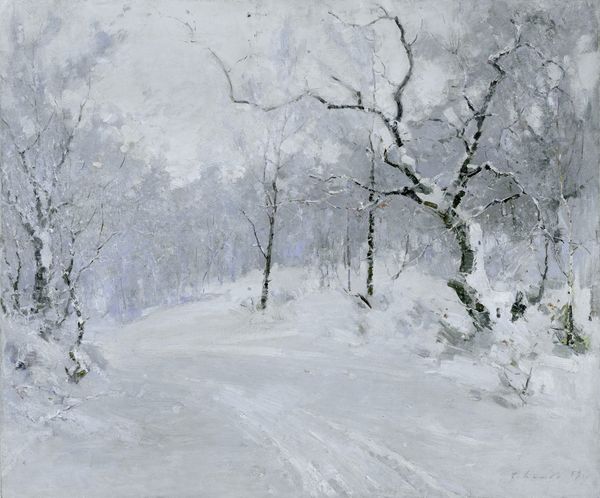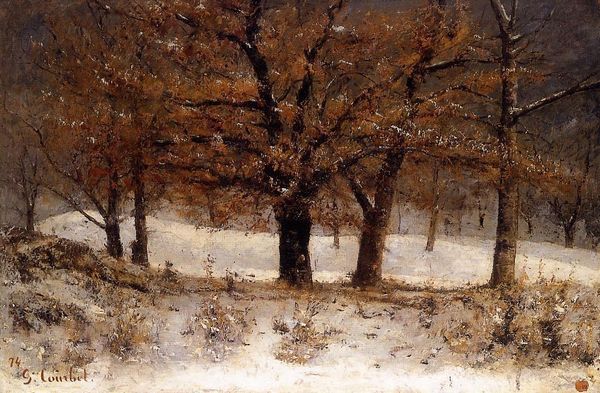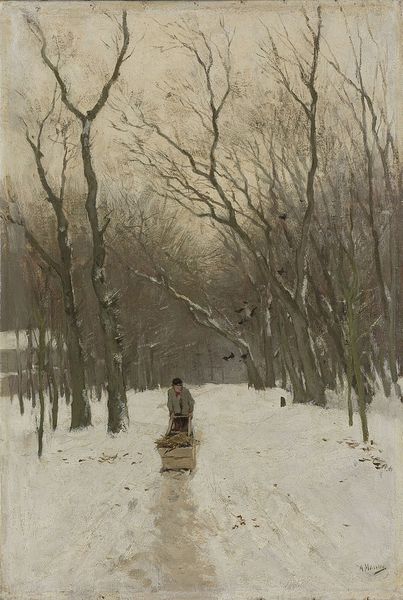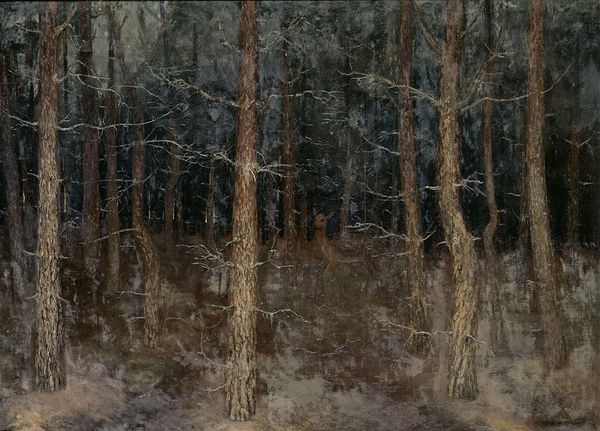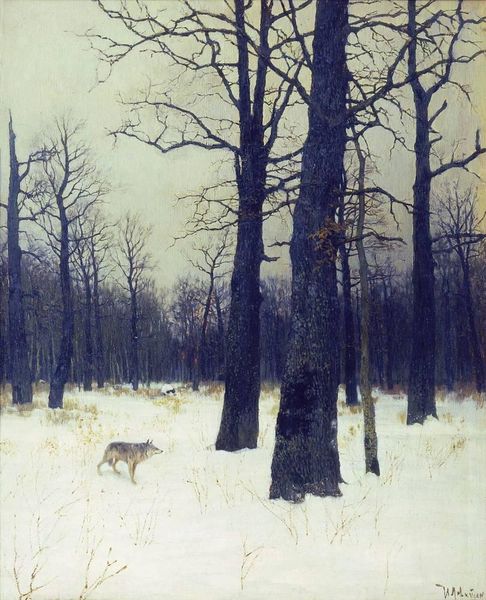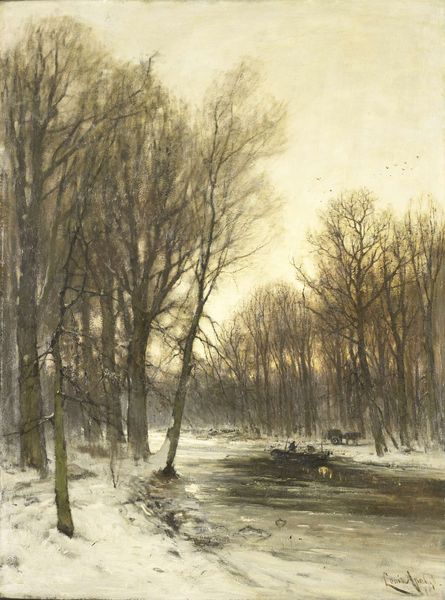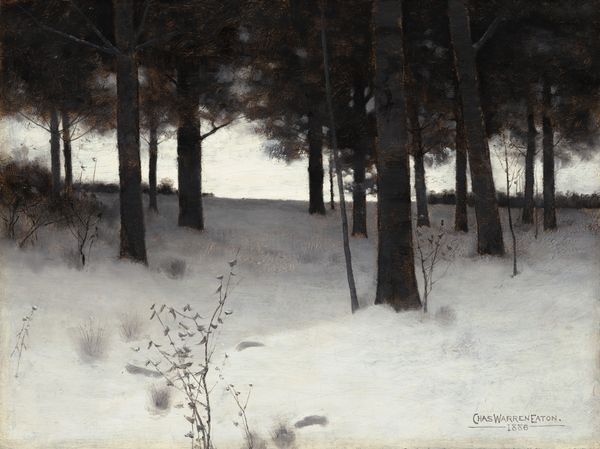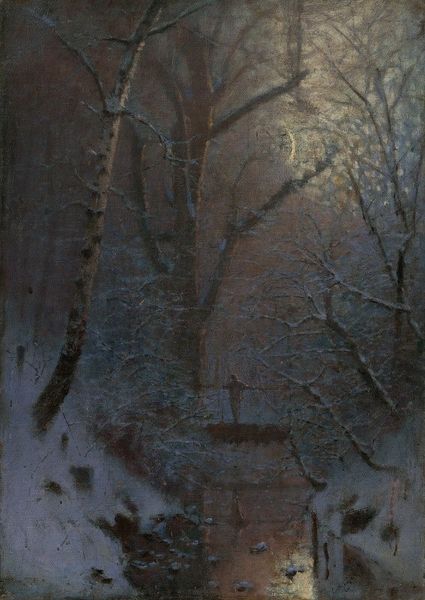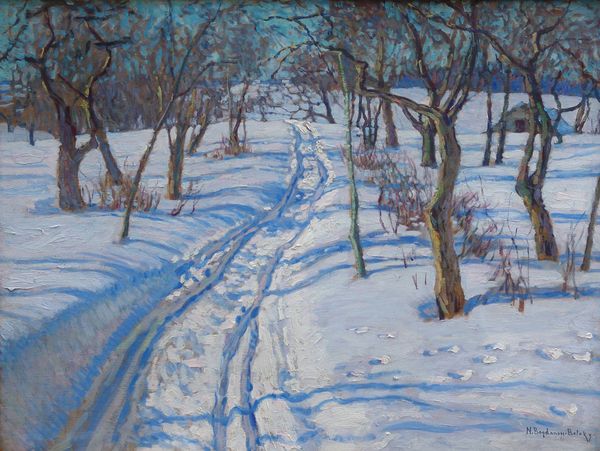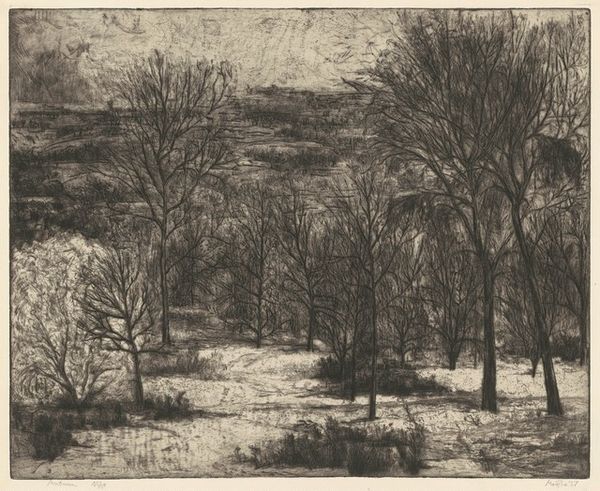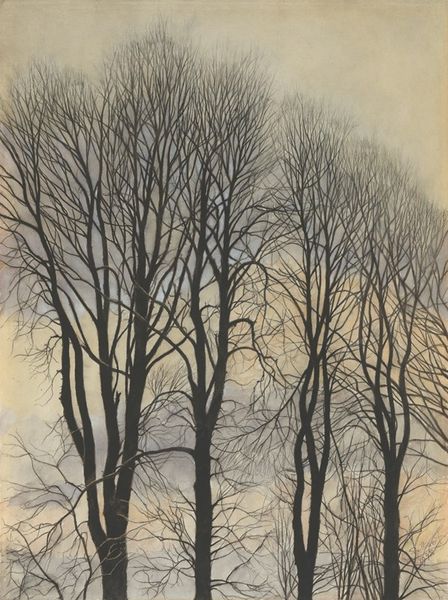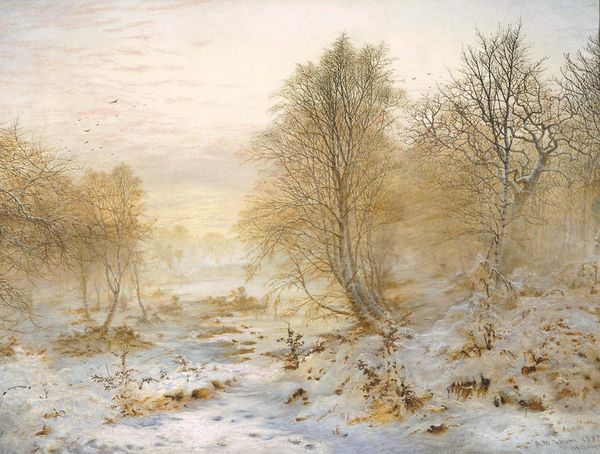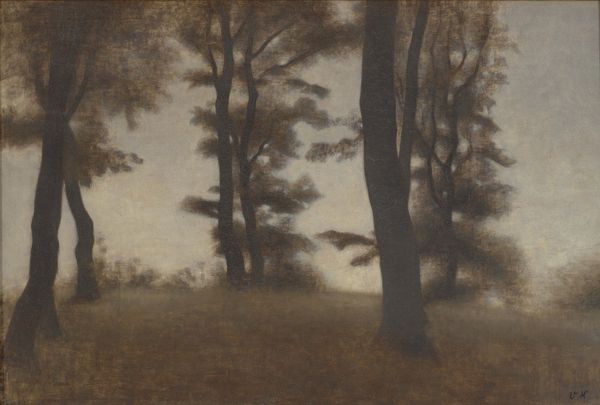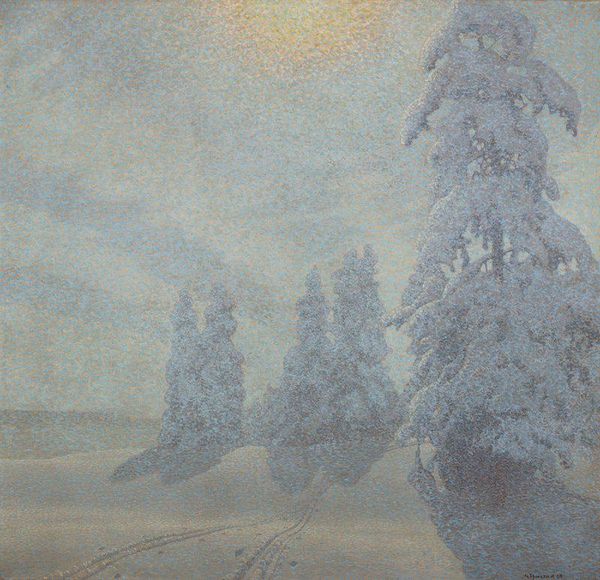
Copyright: Public Domain: Artvee
Curator: Vilhelm Hammershøi's "Søndermarken Park in winter," painted around 1895, presents a stark yet beautiful exploration of the natural landscape. The canvas, rendered in oil paint, is predominantly monochrome, capturing the muted tones of a snow-covered park. Editor: Immediately, it evokes a sense of hushed stillness, a sort of solemn quiet. It feels like stepping into a world where sound is absorbed by the snow, leaving only the skeletal silhouettes of trees against a milky sky. Haunting, almost. Curator: The painting demonstrates Hammershøi's interest in atmospheric effects and his restrained use of color. It's fascinating how the limited palette emphasizes texture and the play of light and shadow. He seems less concerned with representation and more focused on evoking a mood. This was created at the beginning of his mature period as an artist, if we consider his broader trajectory of artistic creation. Editor: Absolutely. Look at the branches, they seem to reach out like spectral fingers. There is a loneliness here, but not necessarily an unpleasant one. More like a quiet contemplation. The application of oil gives depth despite the restriction in coloration, while the perspective pushes you inward. Did he use sketches before painting this piece or straight to canvas? Curator: Evidence indicates he experimented with compositional arrangements using photography to consider light, shadow and geometry, aligning his vision to the formal structures. Also worth pointing out, these monochromatic approaches reflected social trends with tastes that emphasized function, minimalist form, and practical considerations which became increasingly visible in middle class lives during this period. Editor: That's really interesting. Thinking about how industrial materials began filtering into the artworld is a concept worth exploring separately... So, circling back: beyond its quiet beauty, do you see anything in the production that aligns the natural and industrial within the context of art? Curator: A critical observation, yes. There's a tension here, this natural landscape rendered with the products of industrial production: pigments manufactured and distributed via complex systems. And its artistic significance—art viewed by elites. Thus Hammershoi’s work invites consideration around artistic, social, and industrial ecologies, and how these pieces get presented, maintained, preserved, or reinterpreted today. Editor: The image invites us to examine how materials shape artistic expressions and how the landscapes are never viewed independently of the culture in which they are produced. As we head off now, it offers an opportunity for self-reflection on how each piece carries the potential to illuminate hidden societal structures.
Comments
No comments
Be the first to comment and join the conversation on the ultimate creative platform.
